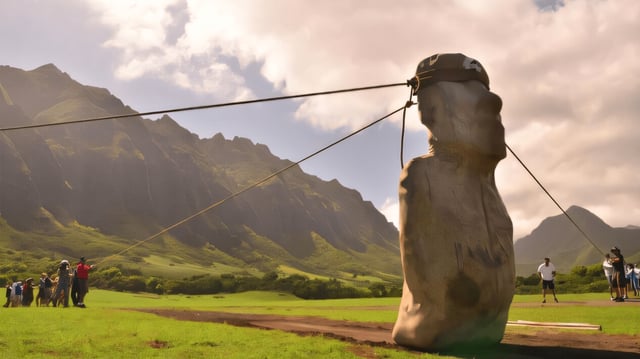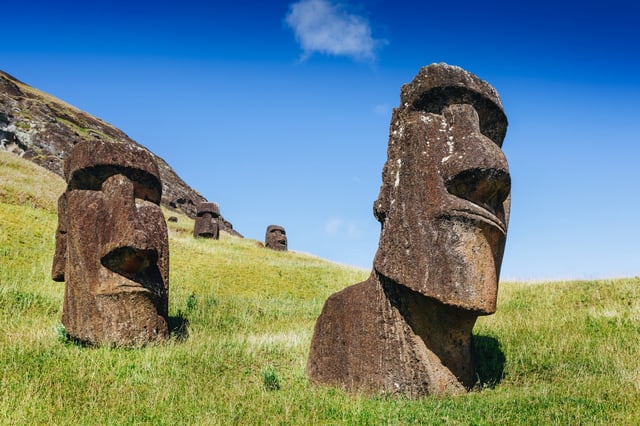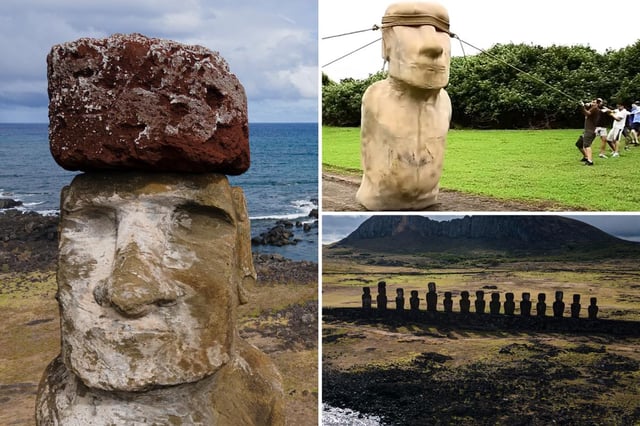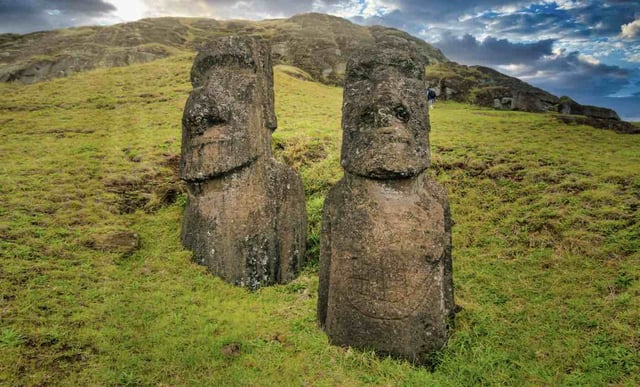Overview
- Researchers analyzed 962 moai, including 62 along ancient routes, using high‑resolution 3D models alongside physics modeling.
- A 4.35‑ton replica with a forward‑leaning design was moved 100 meters in about 40 minutes by 18 people, validating the method in the field.
- Distinctive features such as wide D‑shaped bases and a slight forward tilt made controlled rocking and zig‑zag “walking” mechanically feasible.
- Roads measuring roughly 4.5 meters wide with concave cross‑sections appear purpose‑built to stabilize and guide upright movement, with fallen roadside statues showing attempted re‑erection.
- The findings challenge prone‑drag and roller hypotheses, align with Rapa Nui traditions that the statues “walked,” and invite further testing to refute the model (Journal of Archaeological Science, 2025; DOI: 10.1016/j.jas.2025.106383).



